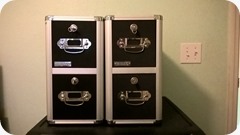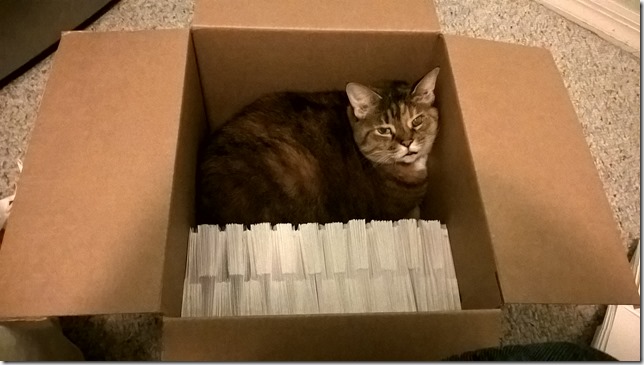If you follow any financial pundits, eventually you will hear them say that whole-life insurance is a bad choice, how it is a poor “investment”, and sometimes, how you’d be stupid to buy it. Well, I was just reviewing my numbers and I’m not sure I understand what all the hatred is about.
First off, you need to think about why you have life insurance. The purpose of life insurance is to make things easier on the ones you leave behind. Primarily, in my case, it is to pay off my mortgage. Whoever I leave behind should not have to be saddled with a mortgage payment when that was my responsibility. Other assets like cars could be repossessed, so what? My credit score doesn’t matter anymore when I’m dead. The secondary purpose of insurance is to replace whatever income I was contributing to the family until whoever is left behind can get back on their feet.
So these two reasons are enough to have life insurance unless you are a total loner and have nothing you want to pass on to someone else. But that’s only good when you’re dead. What if you keep living?
If you don’t know anything about life insurance, here’s some quick info. You typically buy a “term life” policy, which is effective for a period of time (a “term”). If you buy a Term 30 policy, it is active for 30 years. Buying it today, the policy will expire in 2046. If you die in 2047, your beneficiary gets nothing. But, by that time, I would expect your mortgage would be paid off so there’s no burden on your heirs.
Whole-life policies have no expiration. As long as you keep paying the premium, you get the benefits. However, they are vastly more expensive (I’ll share my numbers in a bit). Additionally, whole-life policies have a cash value, which can be accessed as needed, either through an expensive loan or as a retirement account when/if you get to retirement age.
That’s the part that finance people hate. Whole-life is so expensive, but your cash value is locked up and there’s little way to access that money without spending a lot in interest or waiting until you’re old. They call it a savings account for people who can’t discipline themselves to save. It’s almost like a 401k, but without the tax advantages.
Whole-life insurance is a hard sell and brokers will push on you pretty hard to sell it. As such, there’s some salesman-ish stuff that gets promised. For example, I was sold on the idea that the dividends from my whole-life policy would eventually pay the premiums for my policy, then I’d basically have free life insurance. Awesome, huh? Well, it will happen, eventually. I just have to be really patient.
Ok, let’s look at some real numbers. I have $250k in life insurance. $100k is in a Term 20 policy and $150k is in a Whole-life. I pay $118/mo for the whole-life and $16/mo for the term. Now do you see why people freak out about whole life? It’s almost 10x more a month.
There’s not much to say about the term policy. It has no cash value and expires in 2027. In 2028, I will only have $150k in life insurance. Hmmm, that sounds like a good thing. I’m not dropping to zero, and I don’t have to worry about qualifying for a new Term policy at such an old age. It almost sounds like a “plan”.
So how about this Whole-life policy? Well, since 2007, the cash value has grown to $9500. The value is growing at about $1300/yr. But wait, I’m paying a little over $1400/yr in premiums. So my net cost is about $100/yr, which is actually almost half the cost of my term policy.
So, what am I glossing over? For one, the $1300 in cash value increase hasn’t always been that high. Four years ago it was $1200, and since 2007, the average rise has been $1055/yr. But, the value should continue to climb through the magic of compounding. But, I just want to say that I’ve got 9 years into this, and you wouldn’t see numbers like these right off the bat.
You could argue that I’ve spent $12,771 in premiums to gain $9500 in cash value. That sounds horrible. But that also works out to getting a 150k life insurance policy for $363/yr or $30/mo. And that average cost is over 9 years. That number is going drop over time as the cash value increases relative to my constant premium payments.
One more number to give consideration to. After 9 years, my annual dividend is $781. My annual premium is $1400. I’m a little over halfway to the point where my dividends will pay for my premiums. That’s going to coincide well with the expiration of my Term policy (which would also reduce my premium by almost $200/yr).
Let’s recap the whole scenario. I have $250k in life insurance now, when I am most vulnerable with the most mortgage debt and the most to lose if I die. If I had a family, that money would be needed to pay bills and help replace my income. 11 years from now, my Term life expires. I have less life insurance coverage, but I also have less financial burden. If I had a family, they would be grown and on their own by then. The insurance would just pay my reduced debts. I would also have $200/yr less in expenses because the policy expired. Looking even further ahead, when I don’t have any reason to have life insurance because all my bills are paid, then I can start withdrawing money from my whole-life policy. And guess what? I still have the life insurance policy. By then, my dividends will probably be paying my premiums, too, and I won’t have that $1400/yr expense anymore.
When you hear financial people trying to sell you on a “plan”, it can be hard to swallow all that information and difficult to see what the future will look like. It was hard for me as well, but I took a leap of faith and now that I’m a significant way into the “plan”, I can see further ahead and understand that yes, it was a good choice. Early on, it would have been easy to say, “I’m throwing away my money!” But like any investment, it takes time to grow.







